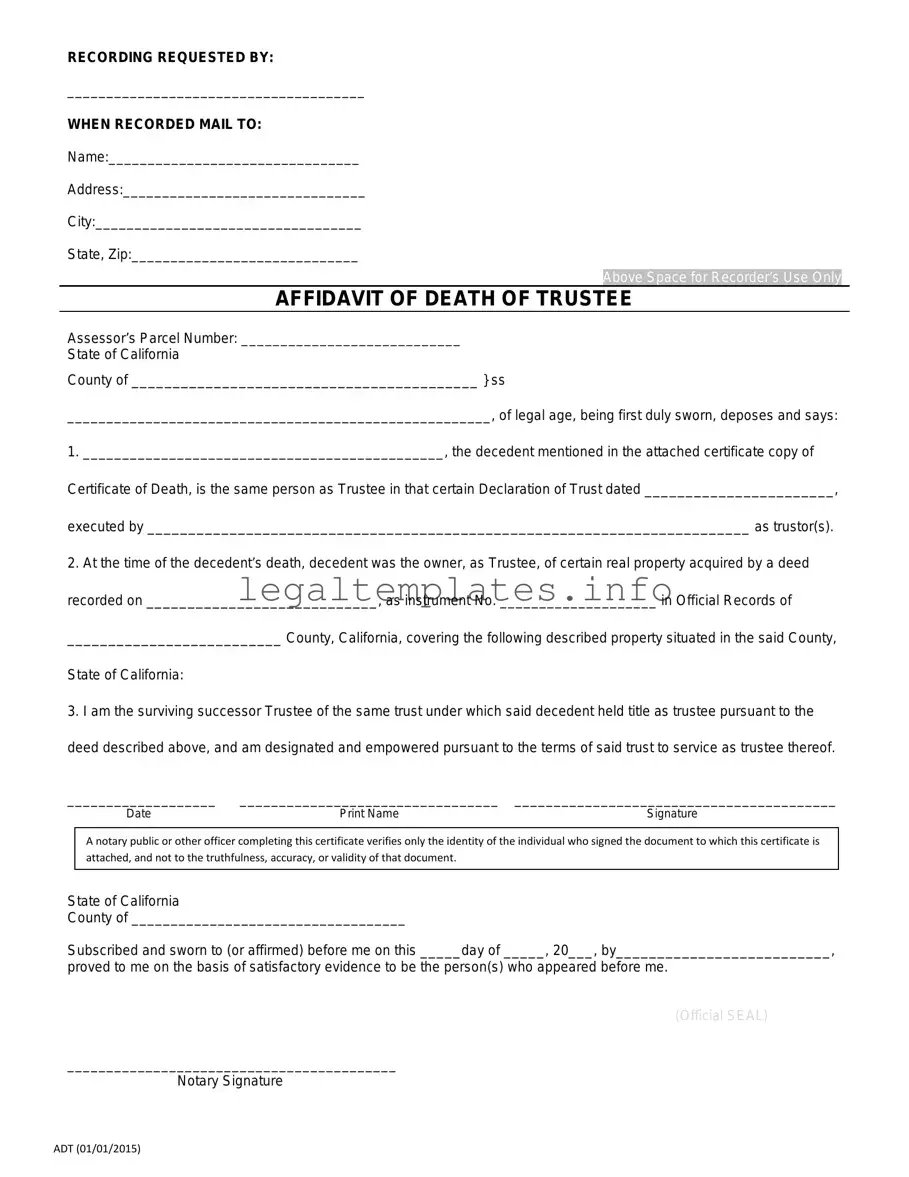What is the California Affidavit of Death of a Trustee form?
This form is used to officially notify interested parties that a trustee of a trust has passed away. It allows for the transfer of real property held by the trust to the successor trustee without the need for probate court proceedings.
Who needs to file a California Affidavit of Death of a Trustee?
When a trustee of a California trust dies, the successor trustee or a legally designated representative should file this affidavit. This action is necessary to update the title of the trust's real property assets to reflect the new trustee.
Where do I file the California Affidavit of Death of a Trustee?
The affidavit should be filed with the county recorder’s office in the county where the real property is located. This ensures that the county records reflect the current trustee as the property title holder.
What documents are required to be filed with the California Affidavit of Death of a Trustee?
In addition to the affidavit, a certified copy of the death certificate of the deceased trustee must be attached. Some counties may require additional documents, such as a preliminary change of ownership report.
Is there a fee to file the California Affidavit of Death of a Trustee?
Yes, county recorders typically charge a filing fee. The amount can vary by county, so it's recommended to check with the specific county recorder’s office for the current fee schedule.
How long does it take to process the California Affidavit of Death of a Trustee?
Processing times can vary significantly by county. On average, it can take anywhere from a few days to several weeks. For specific time frames, contacting the county recorder’s office directly is advisable.
What happens after the California Affidavit of Death of a Trustee is filed?
Once filed and processed, the property title will officially reflect the change in trustee. This updates public records, allowing the new trustee to manage, sell, or transfer the property as directed by the trust.
Is it necessary to use a lawyer to file the California Affidavit of Death of a Trustee?
While not required, consulting with a lawyer who specializes in trust and estate law can provide guidance and ensure the affidavit is properly completed and filed. This is especially helpful in complex cases.
Can the California Affidavit of Death of a Trustee be contested?
Yes, if parties with an interest in the trust believe the affidavit was filed in error or fraudulently, they may contest it in court. Legal advice should be sought in such cases.
Are there any public records of the California Affidavit of Death of a Trustee filing?
Yes, once the affidavit is filed with the county recorder, it becomes a matter of public record. This means that information about the transfer of trusteeship is accessible to the public.

